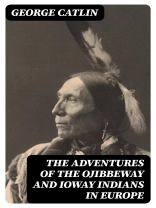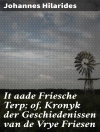In ‘The Adventures of the Ojibbeway and Ioway Indians in Europe, ‘ George Catlin presents an engaging and vivid account of his travels with indigenous tribes in Europe during the 19th century. Through a richly descriptive narrative, combining ethnographic detail with personal reflection, Catlin captures the cultural vibrancy and complexities of the Ojibbeway and Ioway peoples against the backdrop of a rapidly evolving European landscape. His literary style deftly intertwines observation and storytelling, producing a work that is both informative and enchanting, reflecting a growing interest in cultural representation during an era marked by colonial expansion and the romanticization of the ‘noble savage.’ George Catlin, an American painter, author, and anthropologist, devoted much of his life to documenting Native American cultures at a time when they were facing significant existential threats. His extensive travels across the United States, coupled with his artistic background, provided him with a unique perspective that informed his writing. Catlin aimed to raise awareness of Native American cultures and advocate for their preservation, motivated by a profound respect for their ways of life amid the pressures of assimilation and cultural erasure. This book is highly recommended for readers interested in anthropology, Native American studies, and 19th-century travel literature. Catlin’s meticulous documentation not only showcases the richness of indigenous cultures but also serves as a poignant reminder of the fragile and often overlooked human stories behind historical narratives. Engaging and thought-provoking, it is a significant contribution to both literary and cultural history.
Tentang Penulis
George Catlin (1796–1872) was an American painter, author, and traveler who dedicated his life to documenting the appearance and customs of Native American peoples. Catlin’s scientific and artistic endeavors led him to produce a substantial oeuvre, among which ‘The Adventures of the Ojibbeway and Ioway Indians in Europe’ is a significant contribution. This work stands as a particularly illustrative account of Native American experiences abroad, offering rich perspectives on transatlantic cultural encounters in the 19th century. Born in Wilkes-Barre, Pennsylvania, Catlin practiced law before turning to painting as his career focus. Driven by a deep fear that Native Americans and their traditional cultures were facing extinction, he sought to record their way of life through art and prose. From 1830 onwards, Catlin traveled throughout the American West, creating over 500 paintings which depict the daily life, culture, and ceremonies of Native tribes. This ‘Indian Gallery’ is widely celebrated for its ethnographic significance and artistic merit. In addition to painting, Catlin wrote several books that help to illuminate his life’s work and the indigenous cultures he strived to preserve. His texts offer readers a window into the lives of tribal communities and their struggles during a period of profound change. As a pioneering figure in American ethnography, Catlin’s works remain a rich resource for understanding the early encounters between Native Americans and European Americans.












